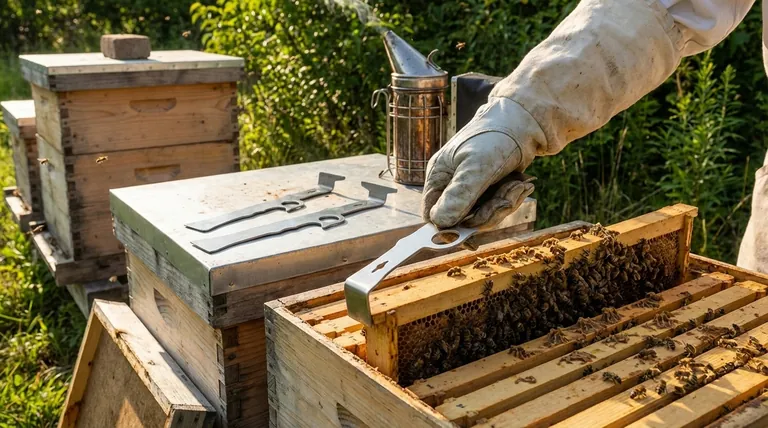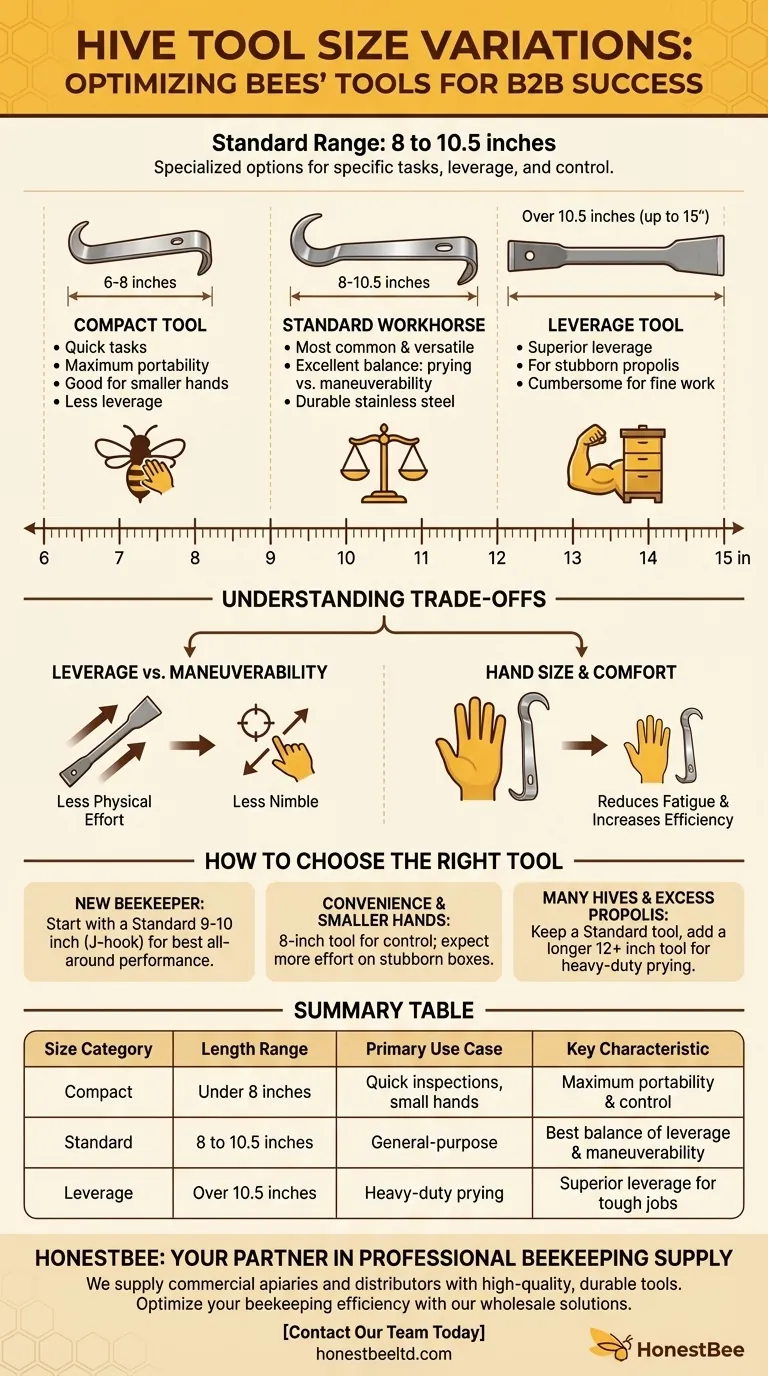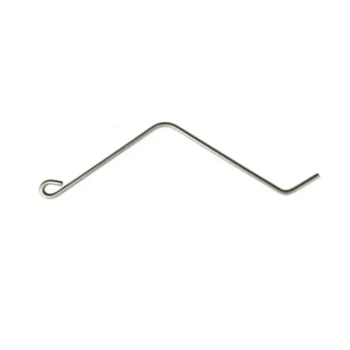In short, hive tools typically range from 8 to 10.5 inches long, but you can find specialized versions as short as 6 inches or as long as 15 inches. This variation is not arbitrary; each size is designed to offer a specific balance of leverage, control, and portability for different beekeeping tasks and user preferences.
While the standard 9 to 10-inch hive tool is a reliable choice for most beginners, the ideal size is not universal. The best tool for you depends on your hand size, the stubbornness of your hives, and the specific tasks you perform most often.
The Standard Workhorse (8 to 10.5 inches)
This is the most common and versatile size you will encounter. Most beekeepers start, and often stay, with a tool in this range.
It provides an excellent balance between prying power and maneuverability. This length is sufficient to break the propolis seal on most frames and boxes without being too clumsy for delicate tasks.
Tools in this range are typically made of durable stainless steel and often feature a hook on one end (a "J-hook" style) and a flat, sharpened scraper on the other.
The Compact Tool (Under 8 inches)
Hive tools around 6 to 8 inches long are designed for maximum portability and quick tasks.
Their primary advantage is convenience. They easily fit into a pocket, making them ideal for rapid inspections or as a secondary, backup tool.
Beekeepers with smaller hands may also find these shorter tools more comfortable and easier to control during use.
The Leverage Tool (Over 10.5 inches)
Longer tools, which can extend up to 15 inches, are specialized for prying and heavy-duty work.
Their main purpose is to provide superior leverage. This is extremely helpful when trying to separate hive bodies or frames that are heavily glued together with propolis.
While powerful, their length can make them cumbersome for finer work inside the hive, such as scraping small bits of wax or navigating between crowded frames.

Understanding the Trade-offs
Choosing a hive tool involves balancing competing factors. There is no single "best" option, only the best fit for a specific situation.
Leverage vs. Maneuverability
A longer tool acts as a better lever, requiring less physical effort to pry apart stuck components. However, that same length makes it less nimble for precise movements in tight spaces.
A shorter tool offers excellent control for delicate work but will require significantly more force to break tough propolis seals.
Hand Size and Comfort
Comfort is a critical factor that is often overlooked. A tool that fits your hand well reduces fatigue and increases your efficiency.
Beekeepers with smaller hands often find a standard 10-inch tool feels unwieldy, preferring the control of a more compact 8-inch model.
Utility and Features
Beyond length, consider the tool's ends. The J-hook is excellent for lifting frames, while a simple flat end is better for scraping. Many beekeepers own both.
Also, look for a tool with one end painted a bright color. This simple feature makes it much easier to find if you drop it in the grass.
How to Choose the Right Hive Tool
Your choice should be guided by your specific context and needs.
- If you are a new beekeeper: Start with a standard 9 or 10-inch hive tool, preferably a J-hook style. It provides the best all-around performance for learning the craft.
- If you prioritize convenience or have smaller hands: An 8-inch tool is an excellent choice, but be prepared to exert more effort when prying open stubborn boxes.
- If you manage many hives or deal with excessive propolis: Keep a standard tool for most tasks, but add a longer 12+ inch tool to your kit specifically for breaking open stuck hive bodies.
Ultimately, the right tool feels like a natural extension of your hand and makes your work in the hive more efficient and enjoyable.
Summary Table:
| Size Category | Length Range | Primary Use Case | Key Characteristic |
|---|---|---|---|
| Compact | Under 8 inches | Quick inspections, secondary tool, small hands | Maximum portability and control |
| Standard | 8 to 10.5 inches | General-purpose beekeeping | Best balance of leverage and maneuverability |
| Leverage | Over 10.5 inches | Heavy-duty prying, stubborn hives | Superior leverage for tough jobs |
Ready to optimize your beekeeping efficiency?
Choosing the right hive tool is just the beginning. At HONESTBEE, we supply commercial apiaries and beekeeping equipment distributors with high-quality, durable tools and supplies designed for professional use. Our wholesale-focused operations ensure you get the reliable equipment you need to manage your hives effectively.
Let us equip you for success. Contact our team today to discuss your specific needs and discover how HONESTBEE can support your operation.
Visual Guide

Related Products
- HONESTBEE Advanced Ergonomic Stainless Steel Hive Tool for Beekeeping
- Long Langstroth Style Horizontal Top Bar Hive for Wholesale
- Automatic Finger Joints Joint Making Machine for Bee Box and Hive Making
- Professional Wide Blade Honey Scraper for Beekeeping and Honey Processing
- Beehive Machine Double End Saw for Precision Hive Component Manufacturing
People Also Ask
- How should beekeepers handle bees when using a hive tool? Master Calm, Deliberate Techniques
- What are some common uses of a hive tool? Essential Multi-Purpose Tool for Every Beekeeper
- What is the hole in a hive tool for? A Multi-Tool for Apiary Repairs and Maintenance
- How is a hive tool used for scraping and cleaning? Master Hive Maintenance for a Healthy Colony
- What tools are used for cleaning frames? A Beekeeper's Simple 4-Tool Guide



















